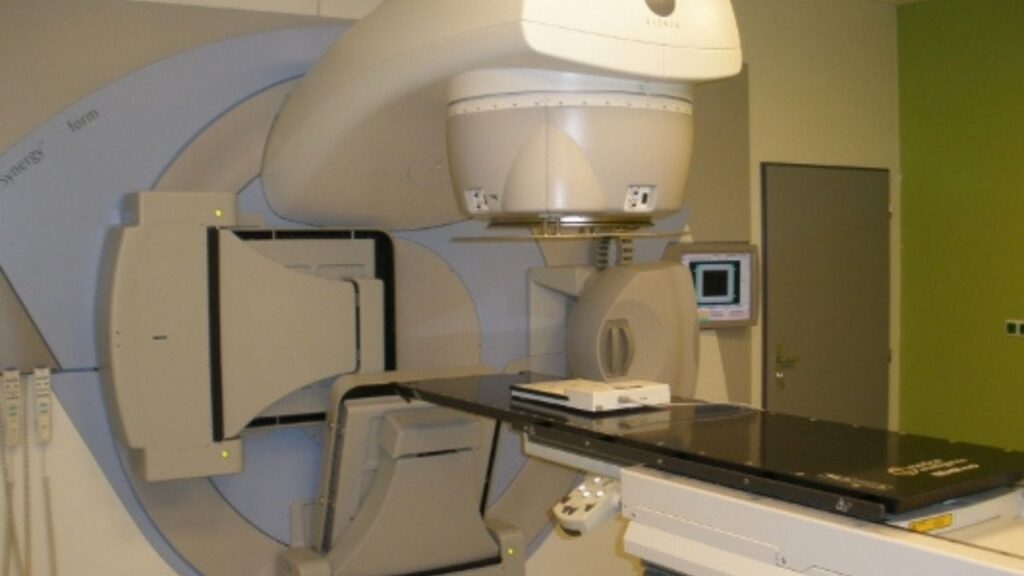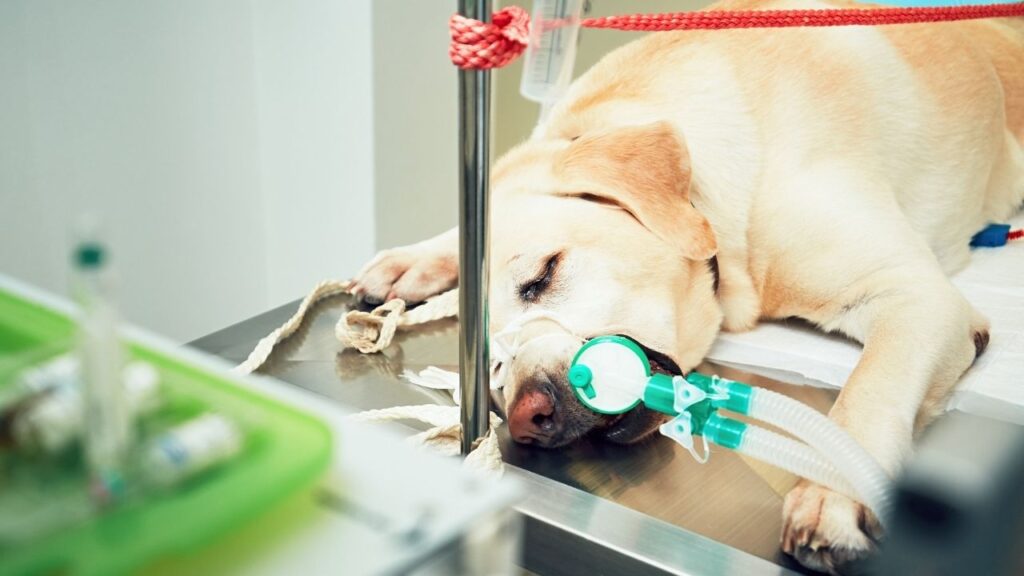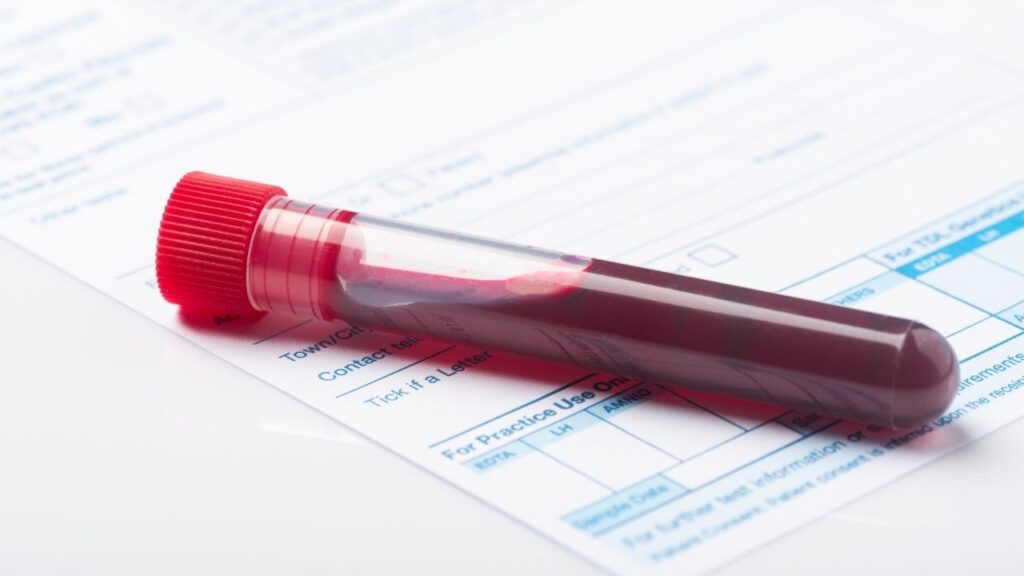Urinalysis in dogs is an easy and inexpensive diagnostic test to assess the bladder and kidneys for a variety of medical conditions, including certain cancers.
Key Takeaways
- A urinalysis shows many things in a dog. A complete urinalysis will include color, turbidity, and odor. It will also measure the specific gravity of the urine. It will detect protein, red blood cells, white blood cells, glucose, ketones, and bilirubin that may be present in the urine. The technician will also look for crystals, renal casts, abnormal cells, and microorganisms.
- Urinalysis itself is not painful, but some methods of collecting the urine sample might require sedation. Most of the time, urinalysis is conducted on the urine collected by free-catch (catching your dog’s pee as they urinate outside).
- Because so many things are reported on urinalysis results, it may not be easy for you to interpret them yourself. Your veterinarian or their technician will be able to help you understand the results.
- Urinalysis can detect conditions such as urinary tract infections, kidney disease, bladder stones, bladder cancer, toxic injuries, or metabolic disease. It also helps your veterinarian understand your dog’s overall health.
- Changes in kidney values that show up in urinalysis might indicate kidney disease has set in. This is particularly important for any dog with cancer who is on drugs that could, overtime, cause kidney damage. By monitoring the health of the kidneys via urinalysis, your veterinarian keeps an eye on long-term side effects from other treatments.
What Does Urinalysis Test for?
Your dog’s veterinarian may recommend a urinalysis to diagnose conditions such as urinary tract infections, kidney disease, urinary crystals or bladder stones, bladder cancer, toxic injuries (such as anti-freeze poisoning), or metabolic disease (such as diabetes).
Urinalysis may also be performed for routine wellness care.3
How Urinalysis Helps Cancer Patients
A urinalysis is often the first step in diagnosing bladder and prostate tumors. Cancerous cells in the urine may be seen under the microscope. Their presence can be used to aid in the diagnosis of transitional cell carcinoma (TCC), the most common cancer of the urinary tract.4
A urinalysis can also be used to check for urinary tract infections in dogs who have weakened immune systems after chemotherapy or to assess kidney function (combined with a blood chemistry panel) for patients going through various cancer treatments.
Cancers Urinalysis Helps to Diagnose
Bladder and prostate cancers are the most common cancers for which a urinalysis may be helpful.
However, urinalyses are commonly used in other types of dog cancer to assess overall health, including kidney function.
What Happens During Urinalysis
Urinalysis in dogs is a standard test and can be done at pretty much any vet clinic.
Urine Sample Collection
For a urinalysis to be performed, the urine must first be collected in one of four ways: voided sample, manual expression, urinary catheterization, or cystocentesis.
Collecting a voided sample involves catching urine mid-stream as the dog naturally urinates. This is typically the easiest and least stressful method of collection (and you can do it yourself at home!). However, it is the method most likely to be contaminated by bacteria on the genitals or by fur or debris.
Manual expression means collecting a urine sample by using manual pressure (squeezing the bladder). This is usually only performed in the clinic on animals who are heavily sedated or have severe neurological disease. Manual expression can cause trauma to the bladder.
In some cases, it may be preferred to collect a sample with a urinary catheter, which is a flexible tube inserted into the urethra. This can be an uncomfortable procedure and may cause trauma or introduce infection. For these reasons, it should be performed by a skilled veterinary professional using sterile technique.
A very common procedure in any veterinary hospital is cystocentesis. This method involves using a needle to go through the skin and into the bladder to draw up a sample of urine. It is frequently performed with an ultrasound to guide the needle directly into the bladder. Most dogs will tolerate this well. However, it may not be suitable for very energetic dogs or dogs who are very sensitive because if the dog moves there is a risk of lacerating the bladder with the needle. This should only be performed by a skilled veterinary professional and is one of the best ways to collect a sample that is not contaminated.1,2

Analyzing the Urine
Once the urine has been collected, the veterinary staff will either perform a urinalysis immediately in the hospital or send the sample to an outside laboratory.
There are four main parts to a urinalysis: gross observation, specific gravity, chemical analysis, and microscopic evaluation.
For the gross observation (basic appearance and properties of the urine sample), the urine will be checked for color, turbidity, and odor.
Then, a device called a refractometer will be used to measure the specific gravity of the urine. This evaluates the kidneys’ ability to concentrate or dilute the urine.
The chemical analysis of the urine is used to detect protein, red blood cells, white blood cells, glucose, ketones, and bilirubin that may be present in the urine. This is often done with a dipstick.
Finally, the sample is evaluated under a microscope. The microscopic evaluation is typically performed by a veterinarian or skilled technician to look for crystals, renal casts, abnormal cells, and microorganisms.
The final report will show all aspects of the urinalysis and allow the veterinarian to assess the dog’s overall kidney and bladder health.1,2
How to Get the Best Results from Urinalysis
Any test is only as good as the sample, so collecting the best sample possible is important.
The best samples are collected via a sterile route (cystocentesis or urinary catheter) or a free-catch sample collected mid-stream.
For free-catch samples, it is best to collect early in the morning and for the test to be performed within 30-60 minutes of urine collection. If the urinalysis cannot be performed immediately, the sample should be refrigerated.1
Dogs who are on medications do not need to stop taking any medications before a urinalysis is performed. However, the veterinarian should be informed about any medications (especially antibiotics or chemotherapy drugs) that the dog is currently taking or has recently taken.
Home Care After Urinalysis
Typically, no aftercare is needed with urinalysis.
However, if a urine sample was taken via catheter, it is ideal to monitor for any signs of infection (urinating small amounts or urinating more frequently), because catheterization can risk introducing bacteria into the bladder.
A small amount of blood may also be seen in the urine of dogs who had a urine sample collected via cystocentesis.
How Long Does a Urinalysis Take for Dogs?
Results are generally available within 24 hours.
Follow Up to Urinalysis
Depending on the urinalysis results, secondary tests, including blood tests or urine cultures, may be recommended.
If abnormal cells are seen on urinalysis, a CADET BRAF test may be recommended to test for transitional cell carcinoma. An ultrasound of the bladder or CT scan may also be recommended.5,6
When to Not Use Urinalysis in Dogs
In most cases, a urinalysis is a very safe test to perform.
However, there are a few instances in which caution should be taken regarding the method of urine collection:
For dogs who have bleeding disorders, cystocentesis should not be performed.1
Cystocentesis is typically not recommended for dogs known to have a bladder tumor, as there is a small risk that the needle could spread cancer cells into the abdomen and skin.
Urinary catheterization should not be performed in dogs who have a urinary tract obstruction, unless it is part of their treatment plan.1
Make sure to ask your veterinarian which method of urine collection is preferred for your dog specifically to make sure all proper precautions are taken.
Where to Get Urinalysis
Urinalysis is a common diagnostic test and is readily available at general and specialty veterinary practices. Even if your regular vet cannot run a urinalysis in-house, they should be able to send a sample out to a lab.
Safety and Side Effects
There are typically little to no side effects seen in urinalysis. However, there are some potential risks, depending on the collection method.
As noted above, there is a risk of bleeding or bruising the bladder with manual expression.
There is a risk of inflammation and infection of the urethra and bladder with urinary catheterization.1
As discussed above, there is a very small risk of spreading a bladder tumor if a cystocentesis is performed in a dog with bladder cancer.7
What Is the Cost of a Dog Urinalysis?
A urinalysis is an inexpensive test that typically costs less than $100-200 depending on the hospital.
- Yadav SN, Ahmed N, Nath AJ, Mahanta D, Kalita MK. Urinalysis in dog and cat: A review. Vet World. 2020 Oct;13(10):2133-2141. doi: 10.14202/vetworld.2020.2133-2141.
- Tornquist, S.J. (2011, May 1) Urinalysis: A step by step approach (proceedings), DVM 360. Available at: https://www.dvm360.com/view/urinalysis-step-step-approach-proceedings
- Whitbread, T. J. (2022, November 10). Urinalysis – clinical pathology and procedures. MSD Veterinary Manual. https://www.msdvetmanual.com/clinical-pathology-and-procedures/diagnostic-procedures-for-the-private-practice-laboratory/urinalysis
- Bladder tumors – canine. VSSO. (n.d.). Retrieved November 16, 2022, from https://vsso.org/bladder-tumors-canine#diagnosis
- Cadet® BRAF acvs campaign – information. CADET® BRAF ACVS Campaign – Information. (n.d.). Retrieved November 16, 2022, from https://web.antechdiagnostics.com/cadet-braf-detail
- What are bladder tumors in pets?. Animal Cancer and Imaging Center. (n.d.). Retrieved November 16, 2022, from http://www.veterinarycancer.com/bladder-tumor
- Nyland TG, Wallack ST, Wisner ER. Needle-tract implantation following US-guided fine-needle aspiration biopsy of transitional cell carcinoma of the bladder, urethra, and prostate. Vet Radiol Ultrasound 2002;43:50–53.
Topics
Did You Find This Helpful? Share It with Your Pack!
Use the buttons to share what you learned on social media, download a PDF, print this out, or email it to your veterinarian.









